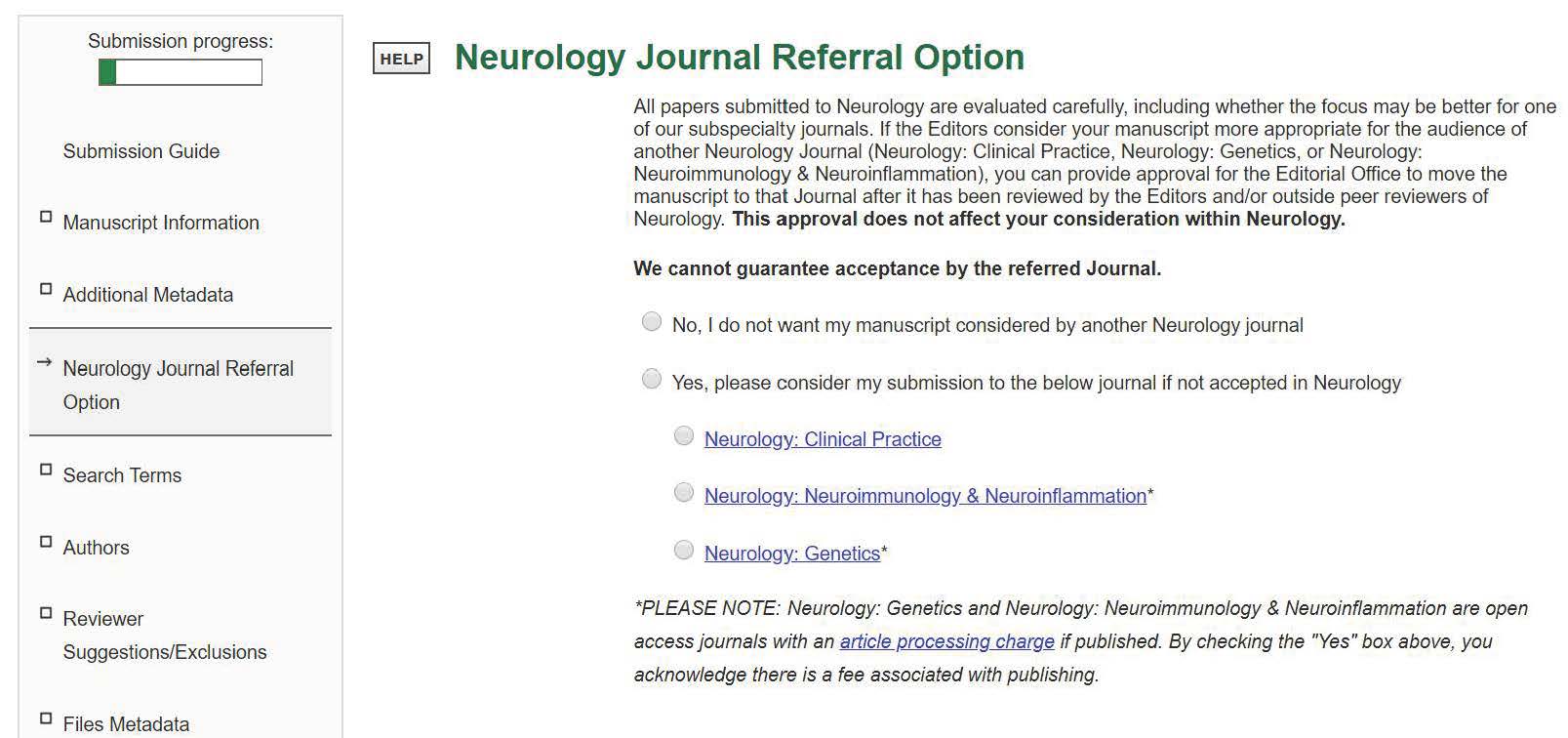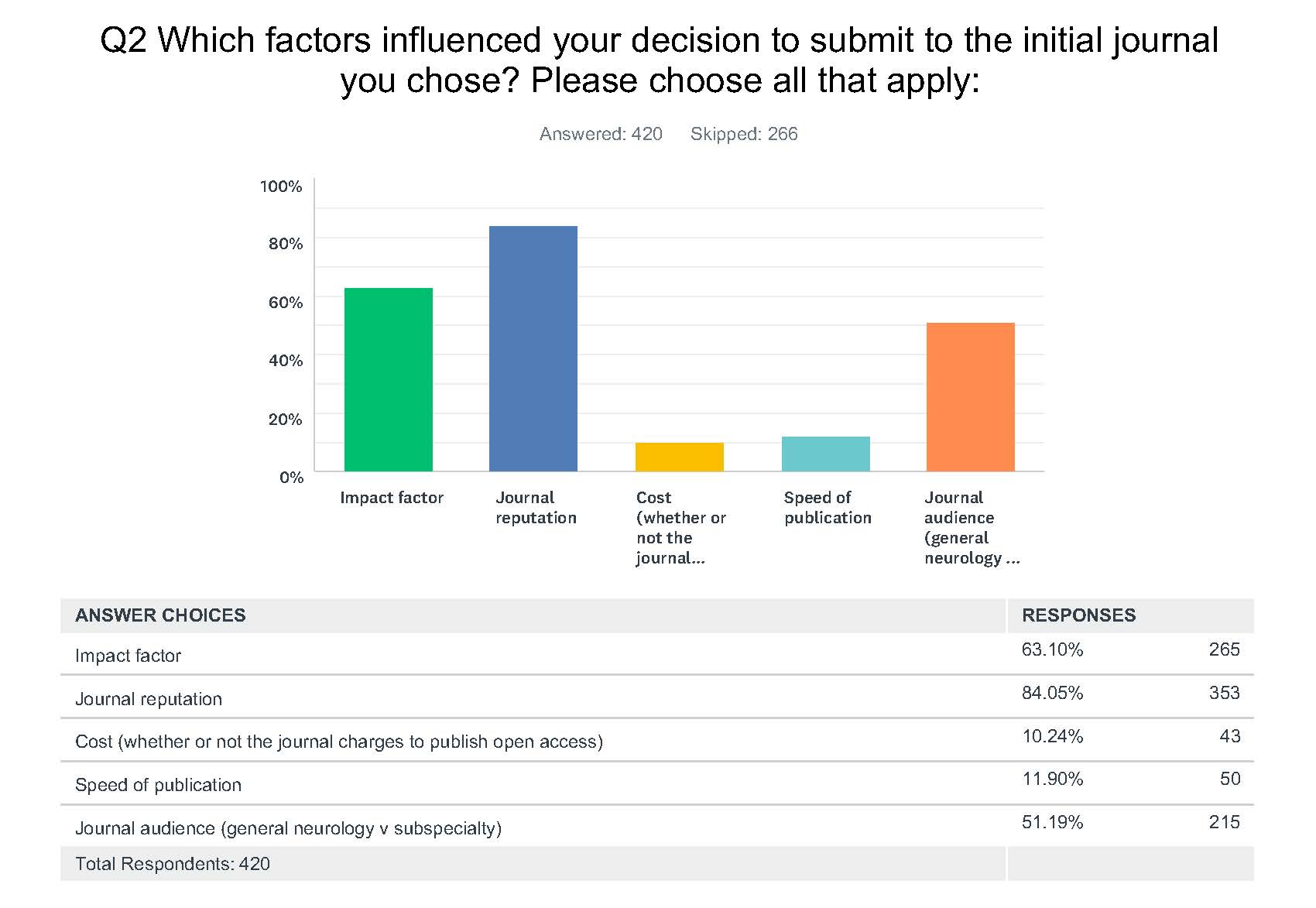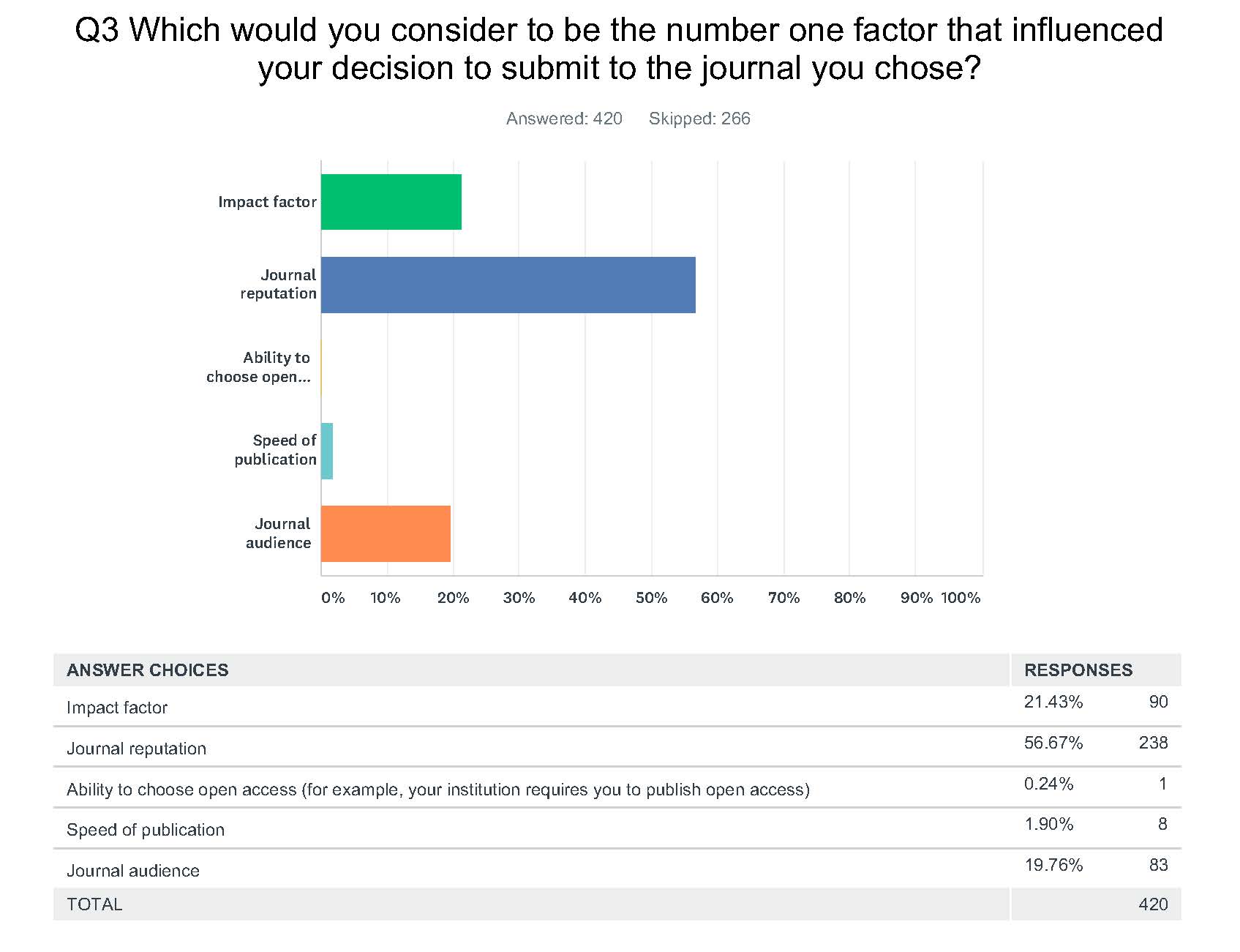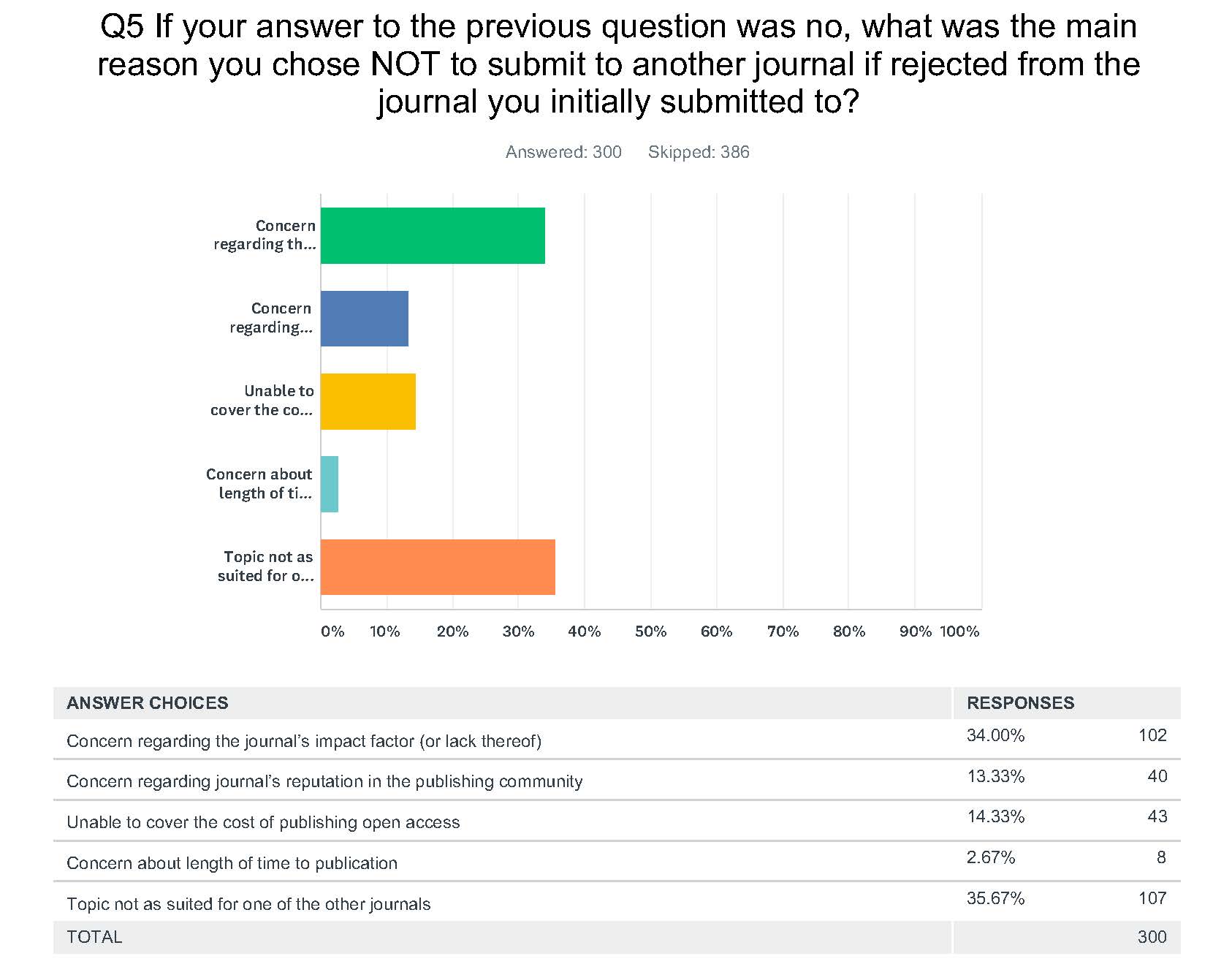Introduction
Authors have multiple factors to consider when choosing a journal to submit their work to, from reputation (perception of how well-known and highly ranked a journal is within the marketplace) to speed of publication. The open access (OA) model introduces cost as another factor for authors to consider, with OA journals charging an article processing fee associated with publishing.1 Societies often host OA journals alongside more traditional, subscription-based models, and in some cases, authors must weigh their options and choose which of those journals could provide the most beneficial platform for their research.
One such society is the American Academy of Neurology (AAN). The AAN hosts many publications, including four research journals: the main journal Neurology®, which recently celebrated its 68th publishing anniversary, and three considerably younger specialty journals: Neurology® Clinical Practice (NCP), Neurology® Neuroimmunology & Neuroinflammation (N2), and Neurology® Genetics (NG) (Table).
Table. Neurology® journals.
| Neurology | Neurology: Clinical Practice | Neurology: Neuroimmunology & Neuroinflammation | Neurology: Genetics | |
| Year launched | 1951 | 2011 | 2014 | 2015 |
| Publishing model | Print and online, 48 issues/year | Print (US only) and online, 6 issues/year | Online only, 6 issues/year | Online only, 6 issues/year |
| OA model | Hybrid | Hybrid | Complete OA | Complete OA |
| Content type | Peer-reviewed articles, editorials and reviews to enhance patient care, education, clinical research, and professionalism | Peer-reviewed articles and editorials on topics of clinical import and insightful analyses of practice management and health policy issues | Peer-reviewed articles, editorials, and reviews to enhance patient care, education, and clinical and translational research | Peer-reviewed articles and editorials in all areas of neurogenetics including rare and common genetic variations, genotype-phenotype correlations, outlier phenotypes as a result of mutations in known disease genes, and genetic variations with a putative link to diseases |
| Impact Factor | 8.689* | None | 7.353* | Will receive in 2020 |
| Indexing | MEDLINE/PubMed, Embase, Scopus, Biological Abstracts®, PsycINFO®, Current Contents®, Web of Science®, CrossRef, and Google Scholar (funded articles are indexed in PMC) | Embase, Scopus, CrossRef, Google Scholar, and Emerging Sources Citation Index (funded articles are indexed in PMC) | PMC, Scopus, Embase, Google Scholar, DOAJ, CrossRef, Science Citation Index Expanded, and Journal Citation Report | PMC, Scopus, Embase, Google Scholar, DOAJ, CrossRef, and Emerging Sources Citation Index |
|
OA = Open Access; PMC = PubMed Central; DOAJ = Directory of Open Access Journals. |
||||
As submissions to Neurology continued to increase exponentially over the years, the editors recognized an increasing demand for clinical neurology content with a focus on the needs of the practicing neurologist. So, after publishing two pilot issues in print that mailed along with Neurology, the first official issue of NCP was published in December 2011. Following its success, the editors identified two additional areas of research that were receiving more submissions than could be published in the parent journal, and in response, launched two more journals, N2 and NG. Both online-only journals follow the growing trend of OA with roots remaining firmly planted alongside the parent journal. Both continue to experience a growing number of submissions.
In November of 2017, Neurology editorial staff and editors consistently noted that manuscripts were often being volleyed back and forth between journals, editors were queried about the same manuscripts multiple times, and manuscripts with solid science were being ultimately rejected due to publishing space constraints. Soon after, the editorial office implemented a mechanism allowing authors the chance to choose prior to submission whether or not they would allow their manuscript to be transferred to another journal if “rejected” from the journal they initially submitted to.
In this “hub-and-spoke model,” all journals are considered first-tier and papers are passed between them in a lateral fashion. Authors are given a choice at submission to select which journal they would like to be considered for, as well as whether or not they would allow their paper to be transferred to one of the specialty journals should the editors determine that it would be better suited to a more specific audience (Figure 1). Alternatively, the spoke journals can be referred to as subspecialty or niche journals intended to address a surplus of submissions in a certain area. This differs from the more traditional cascade model where a portfolio of related journals is ranked and ordered vertically by measured—and perceived—importance.2

By conducting an author survey, I sought to determine the effect that one or more aspects (Impact Factor [IF], journal reputation, cost of publication [i.e., OA], length of time to publication, and whether or not the journal’s audience is suitable to the topic) had on authors’ decisions to initially submit to a journal and subsequently transfer their manuscript if rejected.
Methods
Using Bench<Press, Neurology’s manuscript tracking system and author database, I obtained 4 reports consisting of corresponding authors who submitted manuscripts to any of the four journals between November 17, 2017 (which marked the implementation of the new lateral submission mechanism), and April 12, 2018. I came up with a total of 2,372 authors after removing duplicates to make sure that anyone who submitted more than one manuscript would not receive the survey invitation twice. A short survey was created with 9 mostly multiple-choice questions designed to determine the factors that influenced authors’ decisions to submit to the initial journal of choice and, if rejected from the first journal they submitted to, their reasons for choosing to transfer (or not transfer) to another journal within the Neurology family. We also included questions regarding author satisfaction with the manuscript transfer process for those who chose to have their manuscript transferred, and the paper’s eventual outcome for those who chose to discontinue their Neurology submission. As of May 1, 2019, 686 responses had been received, and the survey was closed to new responses.
Results
The survey found that journal reputation (the way authors perceive a journal’s relevance as compared to other journals in the marketplace) was the most influential factor that authors considered prior to submission, with 84.05% of responses, followed closely by journal IF (defined as a measure of the frequency with which the average article in a journal has been cited in a particular year3) at 63.10%. About half of the respondents gave strong consideration to the intended audience of the journal to which they submitted their work. Ranked lowest on the scale were speed of publication and whether or not a journal was OA (Figure 2). When it came to the single most important factor authors considered, the perception of a journal’s reputation ranked highest for authors at 56.67%, with only one author citing the ability to choose OA as the top priority (Figure 3).


All authors were given the ability at submission to choose whether or not to be considered by another journal if the editor felt the topic or intended audience was more suited to another journal within the Neurology family. The majority of authors who responded to the survey (74.52%) chose not to be transferred to another journal, with most citing a concern regarding the absence of IF for the referral journal (Figure 4).

Authors were also given the option to write in a response, with one respondent noting that they submitted to Neurology (an established journal with an IF) and did not wish to be transferred; although one of the spoke journals could allow their work to reach a more specialized audience, they first wanted to vet other more desirable journals (with regard to IF and reputation) outside of the Neurology family. Another author cited concern that choosing the option for potential transfer at the time of initial submission would result in their article not being given fair consideration and instead receive immediate rejection and transfer. Despite this potential concern, only 6.19% of authors that chose transfer eventually reported dissatisfaction with the process. The majority of those dissatisfied authors reported that they were unaware of the lack of IF and/or cost associated with publishing in the journal to which they were transferred. Full survey results are available as supplemental data.
Discussion
At one time, the decisions authors had to make when submitting articles were more straightforward. Authors would choose a journal for submission by weighing a journal’s reputation and intended audience. In a world where an increasing pressure is put on authors to maximize visibility of their work, they now also must consider the extent of the audience and the speed with which their work can be made available to the public. The benefits of OA are many, namely broad and rapid dissemination of content that is not limited by subscription costs; however, as a growing medium, these journals often lack the branding and reputation of more established journals, as well as require a sometimes substantial fee associated with publishing.
Authors and institutions have traditionally placed a high value on IF, even viewing it as synonymous with a journal’s reputation. However, as technology moves forward, OA options have been introduced that will allow the public to access research more freely, as well as provide authors with a way to make their research available to wider audiences outside of more conventional academia and research circles. Some institutions and funding bodies are doing their part to encourage the adoption of OA as well. The UK’s seven research councils (RCUK), for example, have an Open Access Policy stating that researchers are expected to publish any peer‐reviewed research papers which acknowledge Research Council funding in journals that are compliant with the RCUK policy on OA. All papers must include details of the funding that supported the research and, if applicable, a statement on how the underlying research materials—such as data, samples, or models—can be accessed.4 It is clear from the survey data that only a small percentage of authors place a high value on the availability of publishing OA should their paper reach acceptance (Figure 2). Whether this is due to a lack of understanding the benefits, concerns about funding the article processing charge, or simply a reaction to institutional requirements remains to be seen (and could merit additional research). While some entities have begun to encourage authors to recognize the weaknesses of depending upon IF alone,5 the survey shows that the majority of authors and institutions still depend largely upon IF and perceived reputation to assess a journal’s standing within the medical publishing sphere. In addition, there remains concern among authors with the manuscript transfer process, its transparency, and its effect on the review process.
This study provides editors with information that will allow them to make more informed decisions regarding the transfer of manuscripts within a family of journals, as well as urges editorial offices to rigorously refine the process of lateral submission in order to provide increased transparency for authors undergoing the submission and eventual review process. Because the lateral transfer model is less familiar than the cascade model, the challenge remains properly communicating to authors that one journal is not any more important than any other when it comes to a family of journals and that the target audience must play a weighty role. Possible solutions to this challenge at Neurology have included increased marketing efforts, streamlining of the review process, and detailed editorial office feedback regarding the lateral referral process. It is possible that some combination of the above would result in increased author understanding, but additional research is required. Even so, knowledge regarding the likely influence of OA on author submissions allows context for launching new journal models in the future as well as provides necessary information to societies who may be considering the implementation of OA journals alongside (or in place of) more traditional business models.
References and Links
- Open Society Foundations. What is open access? [accessed December 17, 2019]. https://www.opensocietyfoundations.org/explainers/what-open-access.
- Davis P. Not every journal can support a cascade journal. Scholarly Kitchen. January 24, 2018. [accessed December 17, 2019]. https://scholarlykitchen.sspnet.org/2018/01/24/not-every-publisher-can-support-a-cascade-journal/.
- Web of Science Group. Journal Citation Reports: every journal has a story to tell. [accessed December 17, 2019]. https://clarivate.com/products/journal-citation-reports/.
- Research Councils UK. RCUK policy on open access and supporting guidance. [accessed December 17, 2019]. https://www.ukri.org/files/legacy/documents/rcukopenaccesspolicy-pdf/.
- Curry S. Sick of impact factors. [accessed December 17, 2019]. http://occamstypewriter.org/scurry/2012/08/13/sick-of-impact-factors/.
Lee Ann Kleffman is Managing Editor, Neurology® Genetics, American Academy of Neurology, Minneapolis, Minnesota. Correspondence to lkleffman@neurology.org.
